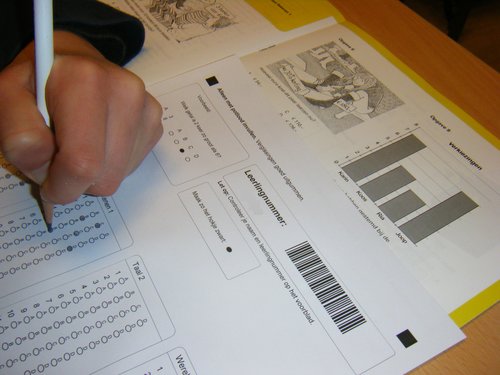I feel like doing a cartwheel and yelling with joy.
No, I didn’t win the lottery… or receive a big quarterly bonus (though, I would gladly accept one if you’re reading this, Walmart ).
I’m happy because of a new paper that just came out.
In it, the researchers decided to reproduce 9 key studies from cognitive psychology.
Instead of looking at the results and seeing a sea of failure (as is usually the case in the world of psychology study replication), they saw a beautiful ocean of robust results. All nine studies stood up.
For us psychologists, that’s heartening. We’ve been used to getting an almost constantstream of bad news over the last few years.
According to earlier replication efforts, cognitive psychology is the area of psychology with the highest replication rate (50%)–twice that of social psychology (25%). Unfortunately, almost *all* of the psychology research that is sent around the blogosphere is social psych research. Social psych is where most of the weird, counterintuitive, and ‘magical’ studies come from. For example all of the growth mindset stuff is social psych (and fails to replicate). That stuff on “power posing” is social psych research, too. So is the work showing that willpower is depleted from tasks requiring self control (also known as ego depletion).
All of these findings have failed replication.
If you’re presented with a social psychology finding, you should assume it’s wrong. Only trust it if you’ve seen multiple independent replications… or if the finding is part of a larger, thoroughly replicated body of literature.
Below is a list of the effects that the researchers replicated in the study I mentioned earlier. Quoted from this article:
-
“The Simon Effect: Participants had to press computer keys to indicate as fast as possible the colour of a on-screen circle. They were faster to respond if the appropriate keyboard key was on the same side of space as the circle they were responding to. This facilitatory effect of “stimulus-response” consistency is important for the design of human-machine interfaces.
-
The Flanker Task: Participants had to press the correct keyboard key as fast as possible to indicate whether a target stimulus was a vowel or consonant. Participants were faster to respond if the target was surrounded by distracting letters associated with the same response (e.g. a target vowel surrounded by irrelevant, distracting vowels), as opposed to being surrounded by distractors associated with a different response (e.g. a vowel surrounded by consonants). The task shows how we can’t help but process irrelevant information to a certain degree.
-
Motor Priming: Participants had to press the appropriate keyboard key as fast as possible in response to left- or right-facing arrows flashed on-screen. Preceding arrows (known as a prime) gave advance warning of which way the target arrows would point: sometimes these primes were accurate, which led to faster performance, as you’d expect; if the primes pointed the wrong way, they slowed performance. Crucially, some of the primes were “masked” to make them subliminal (i.e. not consciously visible), in which case the effects were reversed, with primes pointing the wrong way leading to faster responses. The finding shows how information that’s not consciously perceived can affect our behaviour, and that it can have an opposite effect when subliminal than when consciously perceived.
-
Spacing Effect: Participants were presented with dozens of words in sequence, with some of the words shown more than once in quick succession (i.e. the repetitions appeared close together in the sequence, known as “massing”); the repetition of other words was spread out in the sequence with other words appearing in-between (known as “spacing”). Tested on their memory for the words later, participants showed superior memory for the spaced words than the massed words, a basic phenomenon of memory that has important implications for learning and study.
-
False Memories: Participants were shown sequences of words of related meaning. Tested on their memory of the words later, participants were more likely to mistakenly say that a new word of similar meaning had been present in the earlier sequence than a new word with a meaning unrelated to the earlier list. This is a basic demonstration of the fallibility of memory and how easy it is to feel like we’ve experienced something before when we haven’t.
-
Serial Position Effect: Participants were challenged to remember lists of twenty words. They later showed better memory for words that appeared near the beginning and end of the lists.
-
Associative Priming: Participants had to indicate as fast as possible whether target words flashed on-screen were real words or non-words. They were faster to identify target real words if they’d been preceded by a word (a “prime”) of related meaning, consistent with the idea that activation spreads through networks of related information in the mind.
-
Repetition Priming: Presented with lists of words, some more common than others, participants had to indicate as fast as possible whether each word was a real word or a non-word. Some lists were repeated. Participants were faster to make their judgments when re-tested on a word shown earlier, and this priming effect was more pronounced for less common words – a finding that shows an interesting interaction between short-term memory (based on a recent encounter of a word) and long-term memory (based on how common the word is).
-
Shape simulation: Participants were shown successive pairs of sentences and pictures. For each picture they had to say whether the object it presented had featured in the preceding sentence. Participants were quicker to respond correctly to picture-sentence matches when the orientation of the object was similar in both cases – for example, if the sentence “The ranger saw the eagle in the sky” was followed by an image of a flying eagle as opposed to a perched eagle. The finding shows how we automatically represent the visual images implied by sentences we’ve read.”





